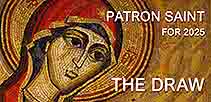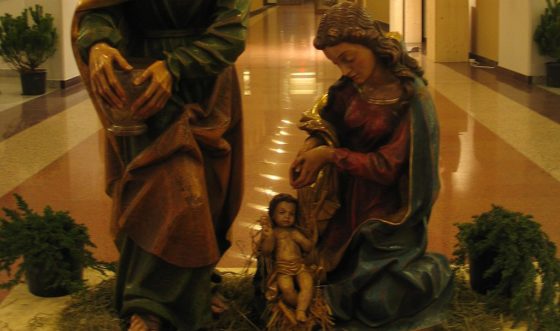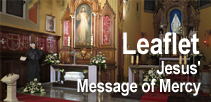Within the Church, Our Lady of Mercy has been venerated under this title for a long time; however, theological literature on this subject is scarce. Our Lady of Mercy is first and foremost the One who gave the Son of God, Mercy Incarnate, to the world and continuously does so, leading all believers to Him. Today’s most complete justification for this title of Mary is given by Pope John Paul II in his encyclical Dives in Misericordia, where he writes that Mary is first of all the One who obtained God’s mercy in an exceptional way, when she was preserved from original sin and endowed with the fullness of grace, to become the Mother of the Son of God. She consented at the time of the Annunciation, and in Bethlehem she gave birth to the Son of God in human flesh and, throughout her life, participated in His revelation of the mystery of God’s mercy until the sacrifice which she made at the foot of the cross. “Mary, then, is the one who has the deepest knowledge of the mystery of God’s mercy. She knows its price, she knows how great it is” (DM 9).
She also proclaims God’s merciful love from generation to generation since the day when she sang the Magnificat at the threshold of her cousin Elizabeth. Mary leads people to the sources of the Saviour’s mercy. The merciful love of God in the history of the Church and the world continues to manifest itself in Her and through Her. John Paul II writes that “this revelation is especially fruitful because in the Mother of God it is based upon the unique tact of her maternal heart, on her particular sensitivity, on her particular fitness to reach all those who most easily accept the merciful love of a mother” (DM 9).
Mary is also Mother of Mercy because by her intercession God’s mercy comes into the world in the form of all graces. Her motherhood towards all people lasts without interruption. The Second Vatican Council emphasizes that “being assumed into heaven she has not laid aside this office of salvation but by her manifold intercession she continues to obtain for us the graces of eternal salvation. By her maternal charity, she takes care of the brethren of her Son who still journey on earth surrounded by dangers and difficulties, until they are led into their blessed home.” (LG 62).
Mary is called the Mother of Mercy, Our Lady of Mercy, or Mother of Divine Mercy, and in each of these titles, as Pope John Paul II writes, there is a deep theological meaning. These titles in fact “speak of her principally, however, as the Mother of the Crucified and Risen One; as the One who, having obtained mercy in an exceptional way, in an equally exceptional way “merits” that mercy throughout her earthly life and, particularly, at the foot of the cross of her Son” (DM 9). She proclaims and implores it for the whole world.
















